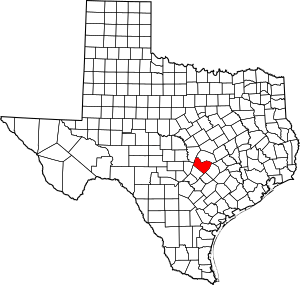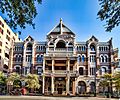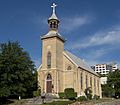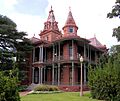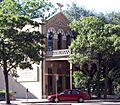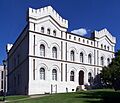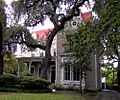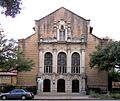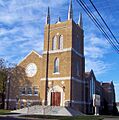National Register of Historic Places listings in Travis County, Texas facts for kids
Have you ever wondered about the oldest and most special buildings or places in your town? In Travis County, Texas, where the big city of Austin is, there are many amazing spots that are officially recognized for their history! These places are listed on something called the National Register of Historic Places.
This list helps us keep track of all the important buildings, areas, and sites in Travis County that have a special story. It's like a hall of fame for historical places in the United States.
There are 206 places in Travis County on this list! Two of them are even more special and are called National Historic Landmarks. This means they are super important to the history of the entire country.
Contents
What is the National Register of Historic Places?
The National Register of Historic Places is the official list of places in the United States that are worth saving. These can be buildings, neighborhoods, archaeological sites, or even objects. They are chosen because they have a unique history, beautiful architecture, or are connected to important people or events.
Why are these places important?
When a place is added to the National Register, it means it's recognized for its value. This helps protect it from being torn down or changed too much. It also helps people learn about the past and understand how our communities grew. Imagine being able to visit a building that's been around for over 100 years!
Cool Historic Buildings in Austin
Many of the historic places in Travis County are located in Austin. Let's explore a few of them!
The Texas State Capitol
One of the most famous buildings is the Texas State Capitol. It's located right in the heart of Austin at Congress and 11th Streets. This huge, beautiful building is where the Texas government meets to make laws. It was built a long time ago and is even a National Historic Landmark! You can see its tall dome from many parts of the city.
The Governor's Mansion
Close to the Capitol is the Governor's Mansion. This is where the Governor of Texas lives. It's a grand old house that has been home to many important leaders throughout Texas history. It's also a National Historic Landmark, showing how important it is to our state's story.
The Driskill Hotel
If you walk around downtown Austin, you might spot the Driskill Hotel. This fancy hotel was built in 1886 and is one of the oldest hotels in Texas. It has amazing architecture and has hosted many famous guests over the years. It's a great example of how old buildings can still be used and enjoyed today.
French Legation
The French Legation is a unique historical site. It was built in 1841 and was once the home of the French representative to the Republic of Texas. Yes, Texas used to be its own country! This building helps us remember that exciting time in history.
Elisabet Ney Museum
The Elisabet Ney Museum is a cool place to visit. It was the studio and home of Elisabet Ney, a famous sculptor. She created many important statues, including ones of Texas heroes. Her home is now a museum where you can see her art and learn about her life.
Paramount Theatre
The Paramount Theatre is a historic theater on Congress Avenue. It opened in 1915 and has shown movies, plays, and concerts for over a century. It's a beautiful place that reminds us of how people used to enjoy entertainment.
Moonlight Towers
You might notice some tall, metal towers around Austin that look like giant streetlights. These are called Moonlight Towers. Austin is the only city in the world that still has these original towers! They were built in the late 1800s to light up the city streets at night. They are a unique part of Austin's history.
Deep Eddy Pool
Deep Eddy Pool is the oldest swimming pool in Texas! It started as a swimming hole in the Colorado River and became a popular spot for people to cool off. It's a fun place to visit and imagine what summer days were like long ago.
McKinney Homestead
Outside of central Austin, the McKinney Homestead is a historic district that includes the ruins of an old home. It tells the story of early settlers in Travis County and how they lived on the land. It's a glimpse into the past of rural Texas.
Images for kids


